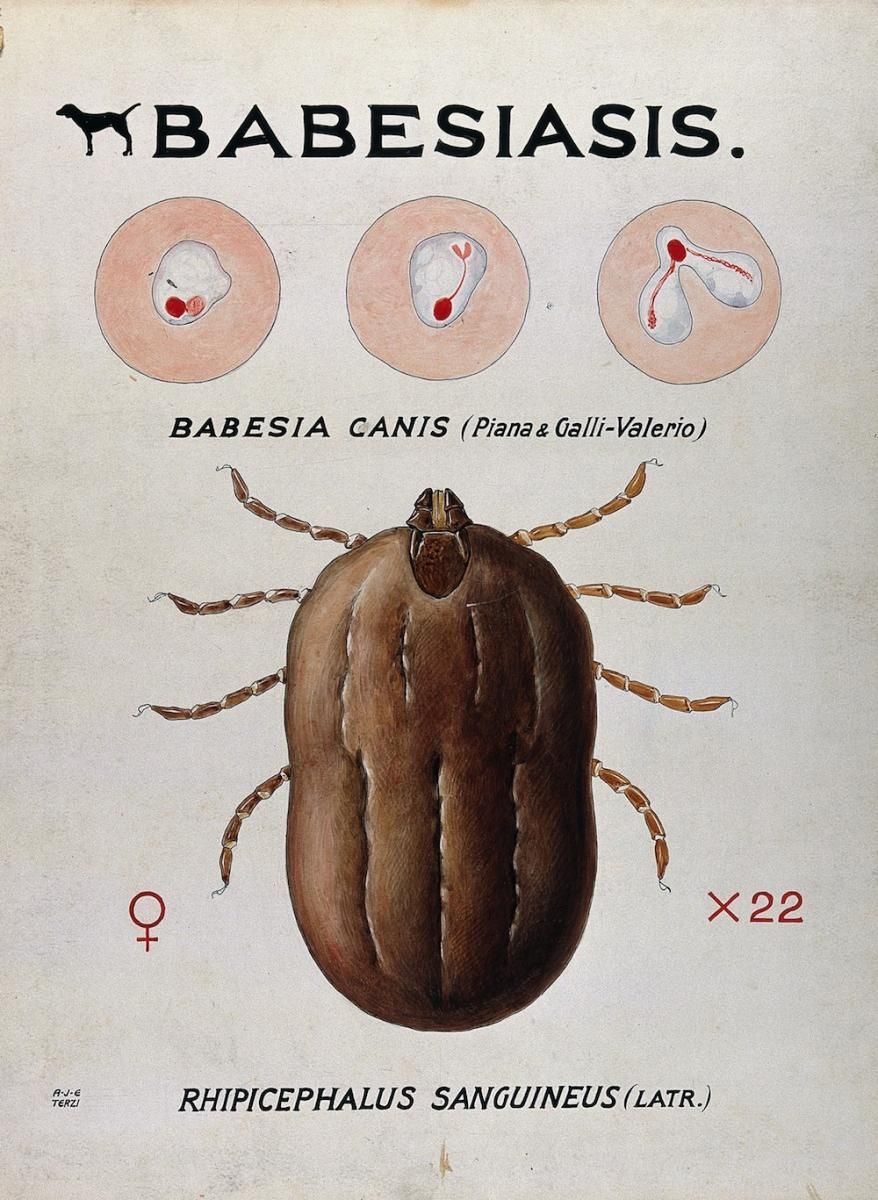New Insights on Babesia canis Transmission in Dogs
Results of a new study show that male Dermacentor reticulatus ticks can infect dogs with Babesia canis much more quickly than previously thought.

See page for author (http://creativecommons.org/licenses/by/4.0), via Wikimedia Commons
Babesia canis is carried by the Dermacentor reticulatus tick and infects canine red blood cells. Although the minimum transmission duration for B canis is not yet known, the general belief is that there is a 48- to 72-hour “grace period” between tick attachment and disease transmission. Thus, veterinarians may recommend acaricidal products that kill ticks within that timeframe.
Interestingly, tickborne disease transmission reportedly can occur more quickly from partially engorged ticks. One particular study suggested immediate B canis transmission from partially engorged male D reticulatus ticks. However, neither this mode of faster disease transmission nor the vectorial competency of male D reticulatus ticks has been researched extensively.
In a recent Parasites & Vectors article, a research team reported its findings on early transmission of B canis to dogs from partially fed male D reticulatus ticks, suggesting the need for a new approach to preventing canine babesiosis.
Experimental Design
The investigators performed 2 experiments, each involving 1 donor sheep, 2 donor dogs, and 6 host dogs; all animals were seronegative for B canis at the start of the study. The study’s adult D reticulatus ticks were B canis—infected males and uninfected females.
RELATED:
- CVC Virginia Beach 2017: Tick-Borne Disease Overview
- A Novel Quantitative PCR Assay Improves Detection of Babesia
Experiment 1: 24-Hour Infestation
The investigators infested the donor animals with infected male and uninfected female ticks for 72 hours, then removed, counted, and categorized the ticks (live or dead, attached, or free). Within 2 hours of tick removal, the 6 host dogs underwent a 24-hour infestation with several dozen of the removed ticks. The ticks were then removed, counted, and categorized as before.
Experiment 2: 8-Hour Infestation
The donor animals underwent an 88-hour tick infestation, after which the ticks were removed, counted, and categorized. Next, the 6 host dogs underwent an 8-hour infestation, followed by tick removal, counting, and categorization.
The donor sheep were euthanized and the donor dogs were treated with intramuscular diminazine aceturate and subcutaneous imidocarb.
The investigators collected blood samples from the host dogs before infestation. If the dogs demonstrated clinical signs of babesiosis (enlarged lymph nodes, pale mucus membranes, splenomegaly, panting), the researchers performed blood smears, polymerase chain reaction, and an immunofluorescence antibody assay. Dogs testing positive for B canis were immediately treated with intramuscular diminazine aceturate, followed by subcutaneous imidocarb 24 hours later.
Results
At tick removal, the average number of attached, live, male ticks on the host dogs was 34 in experiment 1 and 25 in experiment 2. Within a week of infestation, all host dogs from experiment 1 began testing positive for B canis and had clinical signs of babesiosis. Although all host dogs in experiment 2 showed clinical signs of babesiosis, only 3 tested positive for B canis.
Conclusions
The study’s results highlight several major findings:
- Partially engorged male D reticulatus ticks can successfully reattach to a second host and transmit B canis.
- B canis can be transmitted successfully regardless of donor species.
- B canis transmission occurs as early as 8 to 24 hours after tick infestation.
The researchers noted subtle engorgement of the male ticks, raising concern that pet owners may not detect the ticks before disease transmission occurs. In addition, because the minimal transmission duration for B canis remains unknown, new anti-attachment and repellency strategies for D reticulatus ticks need to be developed.
Future studies should explore factors influencing reattachment to a second host and faster B canis transmission times, the researchers suggested.
Dr. Pendergrass received her Doctor of Veterinary Medicine degree from the Virginia-Maryland College of Veterinary Medicine. Following veterinary school, she completed a postdoctoral fellowship at Emory University’s Yerkes National Primate Research Center. Dr. Pendergrass is the founder and owner of JPen Communications, a medical communications company.